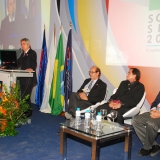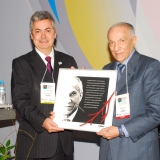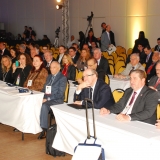Rio de Janeiro – June 8, 2016.
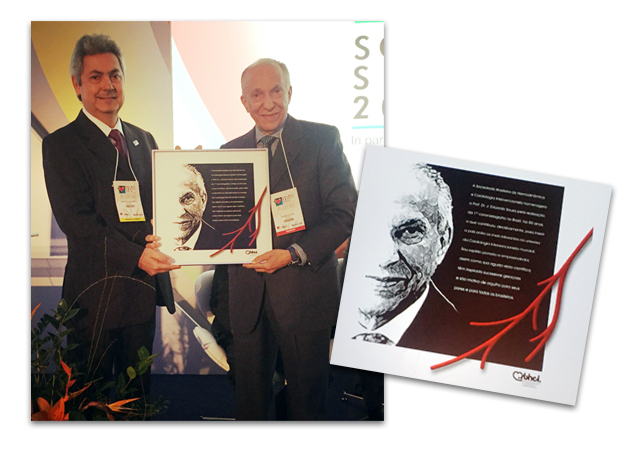
After this deserved tribute, Dr. Sousa personally announced the British professor Patrick W. Serruys, who delivered the first presentation: “Coronary Artery Disease: from Prevention to Preventive PCI”. This talk presented the evolution of knowledge on atherosclerosis and the clinical impact of LDL reduction with current PCSK9 inhibitors.
The international guest cited randomized studies in progress aimed to assess clinical outcomes that totalize nearly 70 thousand patients (FOURIER NCT01764633, ODYSSEY Outcomes – NCT01663402, SPIRE I E SPIRE II NCT01975389).
Professor Serruys also analyzed studies using several invasive techniques to detect unstable plaque and clinical trials in progress proposing interventions on plaque with no functional repercussion, but with instability markers. (PREVENT Trial NCT02316886, PROSPECT II Trial NCT02171065).
Later in the morning, professor Serruys took us through the evolution of the Syntax score from anatomical to clinical-anatomical Syntax II, and the 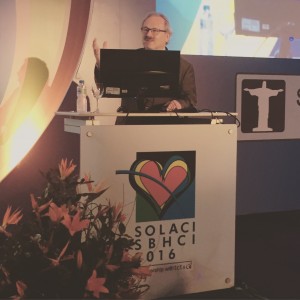
http://www.syntaxscore.com/calc2/start.htm
http://www.ecri-trials.com/studies/syntax-iii/study-purpose/
Right after, Dr. Rafael Cavalcante y Silva introduced the following question: “Diabetes and Multivessel Coronary Disease: Do we have FREEDOM to perform PCI?” He opened the discussion on European Guideline recommendations (I-A for CABG over PCI and Ilab for PCI as an alternative for patients with SYNTAX ≤ 22) based partly on the FREEDOM trial (NEJM, 2012).
Some limitations to this trial are patent, he explained: first generation stents were merely used, mean follow up was at 3.8 years and a meagre 23% in 5 years associated to no CoreLab adjudication. Following this line of thought, he proposed that we assess the real impact of Syntax in the diabetic subgroup with three studies, as we can see on this slide:
Outcomes show the estimated MACCE rate at 5 years is the same for PCI and CABG, even for patients with ≤32 Syntax score. He concluded: in patients with diabetes, the Syntax has an impact on the difference between CABG and PCI outcomes. Still, he claimed, PCI is a safe alternative for patients with ˂32 Syntax and diabetes should not be the main factor guiding revascularization selection for patients with multivessel disease.
On this first day, there was a live presentation direct from Toulouse, France, by Dr. Jean Fajadet’s team. Via high definition transmission, we were able to see from different angles the successful implantation of an Evolut R prosthesis in an intermediate risk patient with the use of a minimalist strategy and an embolism protection device.
While this procedure was being carried out, the audience was able to enjoy the comments and observations of panelists: Rafael Cavalcante e Silva (Brazil), Patrick W. Serruys (UK), Samir Kapadia (USA), Jorge Atilio Belardi (Argentina) and, in the audience, Dr. Eberhard Grube (Germany) was invited to join them.
Another event of significant relevance was the Cleveland Clinic Symposium, “THE YEAR OF INTERVENTIONAL CARDIOLOGY IN REVIEW”. Presided by Dr. Expedito Eustáquio Ribeiro with Conrad Simpfendorfer, Michael Lincoff and Samir Kapadia, who debated over the following topics, respectively: “Coronary Artery Disease”, “Antiplatelet Therapy, Anticoagulants and Drug Therapy” and “Transcatheter Aortic Valve Implant and Mitral Valve Percutaneous Intervention”. The analyzis was done by the special guests Patrick Serruys, Roxana Mehran and Martin Leon.


